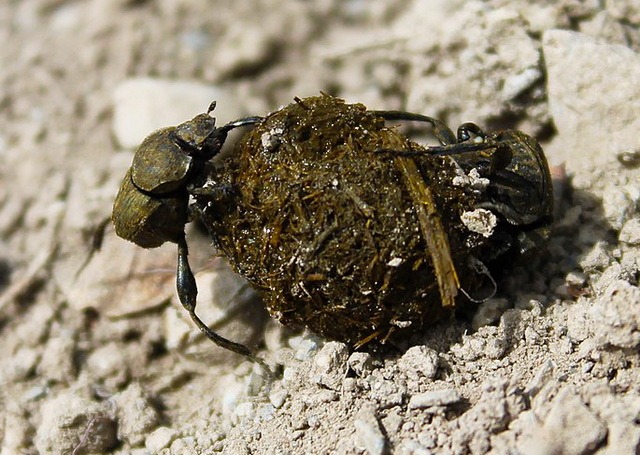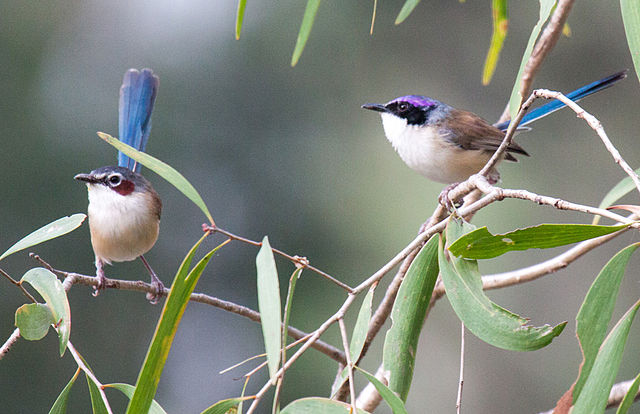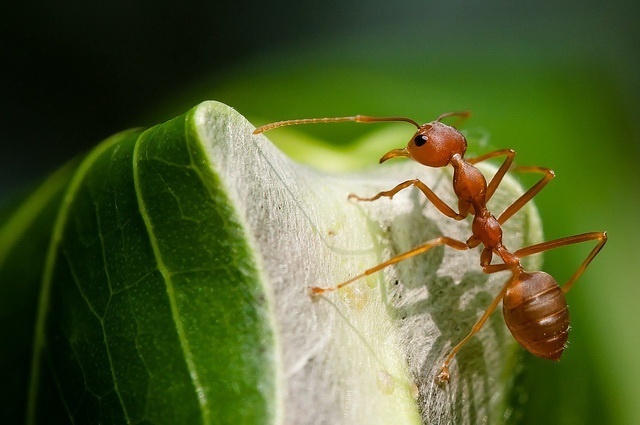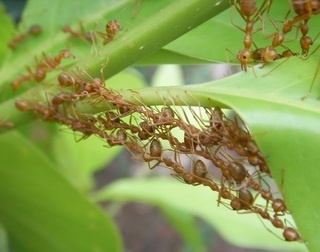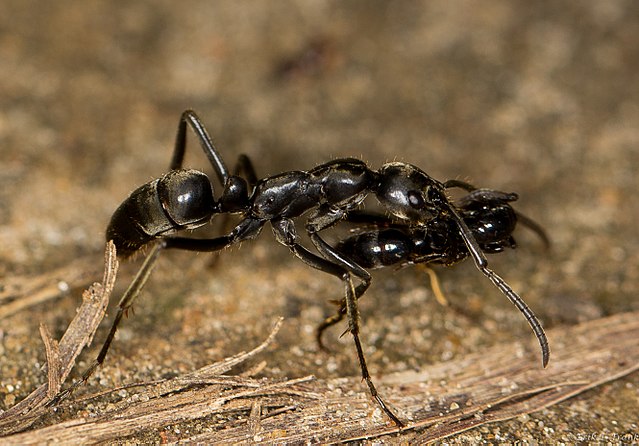Florida carpenter ant workers treat leg wounds effectively

Injured leg? In the Florida carpenter ant, Camponotus floridanus, nestmates treat the patient to prevent lethal infections. If it is useful, they amputate the leg, Erik Frank and colleagues write.
With a wound on a leg, a worker of the Florida carpenter ant, Camponotus floridanus, would have only a small chance to survive if it were not for her nest mates that come to the rescue. To prevent infection, they lick the wound clean and often amputate the leg, significantly increasing the survival chance, Erik Frank and colleagues show. This care is frequently needed because colonies of this ant species fight each other intensively.
The researchers tested the ants’ medical skills by making a small cut in the leg of workers. They then injected a saline solution containing a deadly bacterium, Pseudomonas aeruginosa, into the wound. Infected ants were placed either in isolation or in a nest where two hundred workers were available.
Bitten off
Most of the ants that sat alone after infection succumbed to the injuries. But when placed in a nest, most ants did survive thanks to the care of nest mates. What care they provided turned out to depend on where the wound was.
If the infected wound was on the upper leg, usually one of the nest mates intervened drastically and bit off the leg at the top. If the wound was on the lower leg, this did not happen; instead, workers licked the wound thoroughly clean. In both cases, helpers chose the treatment that was most effective, as became clear in experiments with infected wounds in which the researchers amputated the affected leg.
Bacterial load
If they amputated a leg of an ant with a wound on the upper part, then her chance to survive was as high as it was in the case of amputation by nestmates. But if they removed a leg with an injury on the lower part, it did not help: most patients died. The treatment that the ants apply in that case, extensive cleaning, is much more effective.
Why is amputation only helpful for an infection in the upper leg?
Whether an ant will survive an infection depends on how quickly the bacteria are able to spread through the body: the higher the bacterial load, the higher the mortality. The bacteria spread via the hemolymph, the insect version of blood, which flows through the legs in channels.
In the upper leg, these channels are narrower than in the lower leg, so that bacteria are less likely to enter the hemolymph. Also, the upper leg has much more muscle mass than the lower leg, and blood is pumped around by muscle movements. If the upper leg is affected, circulation is slowed down much more than if the lower leg is affected, impeding the spread of bacteria.
Time enough
Consequently, when the upper leg is affected, ants have enough time to perform an amputation, which takes forty minutes at least, before the bacteria have spread. But timely amputation is unfeasible with an infection in the lower leg. Then cleaning is the best way to help a victim.
The ants also amputated the leg if the researchers injured the upper leg but injected a sterile saline solution instead of a solution with bacteria. That makes sense, because under natural conditions, in the ants’ nest, such a wound is most likely to become infected. The workers err on the side of caution.
The Florida carpenter ant is the only animal species known to apply amputation to treat conspecifics in case of injury.
The researchers previously discovered that also workers of the Matabele ant from Africa, Megaponera analis, treat infected wounds of nestmates. They do so by administering antibiotics from glands on their backs that produce a mix of antimicrobial substances. The Florida carpenter ant does not have such a built-in pharmacy. For this ant, cleaning and amputation are good alternatives.
Willy van Strien
Illustration: ©Hanna Haring
See also: the Matabele ant fights infections with self-made antibiotics
Source:
Frank, E.T., D. Buffat, J. Liberti, L. Aibekova, E.P. Economo & L. Keller, 2024. Wound-dependent leg amputations to combat infections in an ant society. Current Biology, 2 July online. Doi: 10.1016/j.cub.2024.06.021
